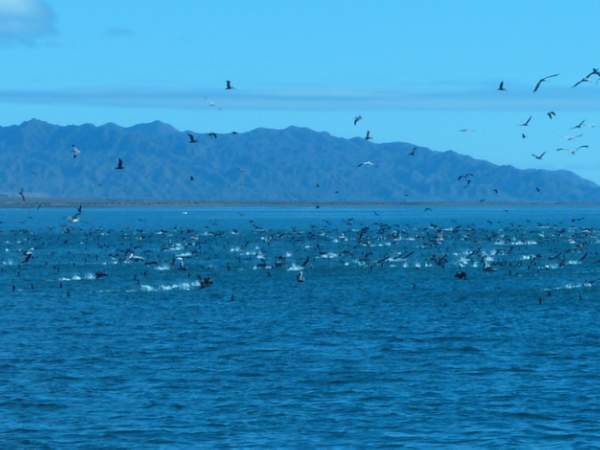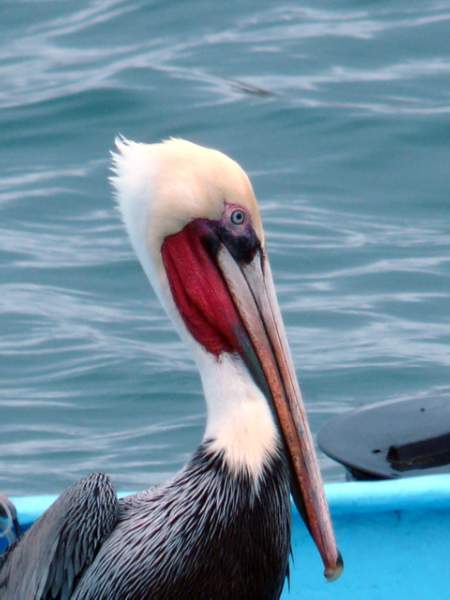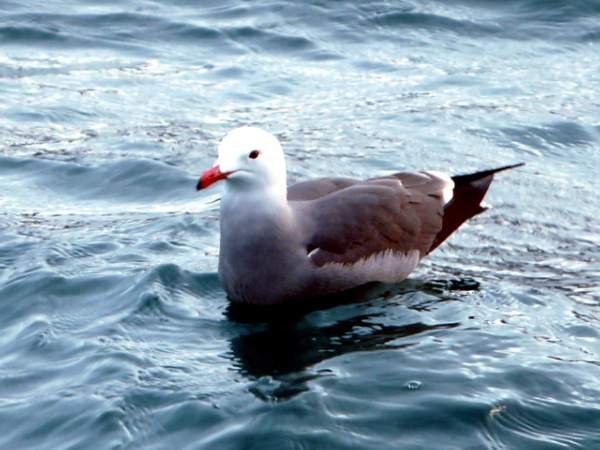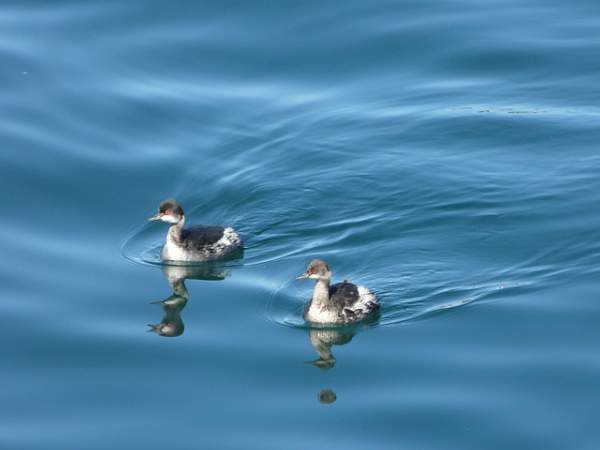Published in the Ocean Watch column, Honolulu Star-Advertiser © Susan Scott
February 13, 2009
SAN CARLOS, Sonora, Mexico » During my monthlong sailing trip in the Sea of Cortez, one of my favorite pastimes was watching seabirds fish.
This didn’t require any keen-eyed bird watching. All I had to do was sit in the cockpit.
That’s what I was doing one morning in a quiet anchorage called Partida Cove when it began raining pelicans. For about half an hour, dozens of brown pelicans plunged from the air to the water in spectacular crashes, each splash as big and loud as a person falling overboard.

The birds’ boisterous landings made it seem unlikely they would catch any fish, but they did, of course, with nearly every dive.
We knew this because we could see the fish struggling in the pelican’s red, skin-thin pouch. The birds would raise their beaks vertically, arrange their fish to go down head first and then swallow. A moment later the pelican made an awkward run on the water to take flight, rose up and dived again.
The pelicans in the Sea of Cortez are called brown pelicans after their main body color.

This species lives only in the tropics and subtropics of North and South America and is unique among the world’s eight pelican species in that it is strictly marine and fishes by plunge-diving. American white pelicans, found only in North America, prefer freshwater habitats and feed in small groups by swimming shoulder to shoulder to drive fish into shallow water. Then the pelicans dip their bills and scoop up the cornered fish.
Browns are good at diving for and catching fish, but they have to guard their catches. A gull called Heermann’s gull hangs around brown pelicans trying to steal their fish.
Heermann’s gulls are a new seabird for me, and even though gull species are often hard to identify, this one was easy. Heermann’s have bright red beaks with smoky gray bodies. Some have white heads and all are strikingly beautiful. One seabird book I have aboard says this gull is “distinctive in all seasons.” Another describes it as “unmistakable” and that’s true.

These attractive gulls are practically mascots of the Sea of Cortez since 90 percent of them breed on one tiny island here, Isla Rasa, located west of Isla Tiburon.
I didn’t have to look far for Heermann’s gulls. These little pirates follow brown pelicans, cormorants and sea lions in hopes of stealing catches. It didn’t seem particularly profitable. Often I watched Heermann’s gulls lunge at pelicans’ beaks as they emerged from dives, but I never saw a gull get a fish.
If I had to choose a favorite seabird here in the sea, it would be the least grebe, a drab name for this fabulous bird. I prefer a former common name, American dabchick.
These plump, 8- to 9-inch-long birds look like black-and-white ducklings with bright orange eyes. The little dabchicks often dive just below the water’s surface to fish, and from the cockpit or a pier, you can watch them frog-kick along underwater. Sometimes, though, the birds dip their heads below the surface, raise their tufted tails and paddle along like they’re snorkeling.
The water here is too cold for me to go snorkeling right now, but with cannonballing pelicans, buccaneer gulls and snorkeling dabchicks for entertainment, who cares?
Imagine how much fun I’m going to have when I actually leave the cockpit.
